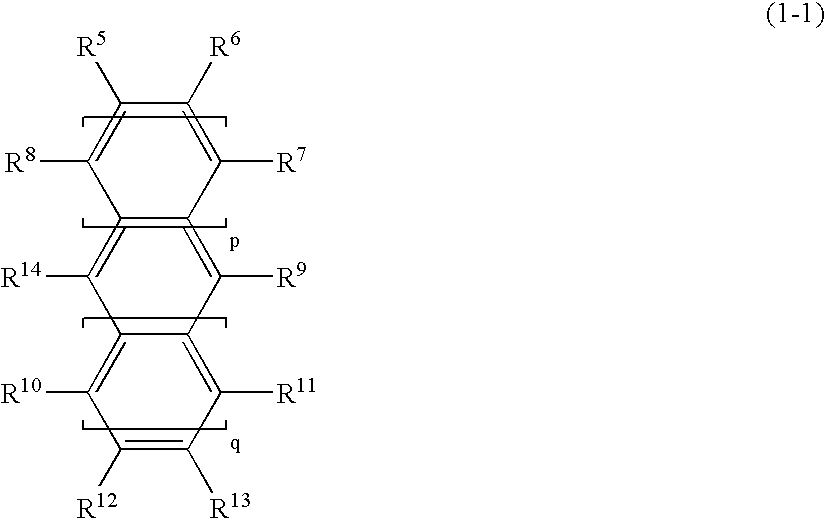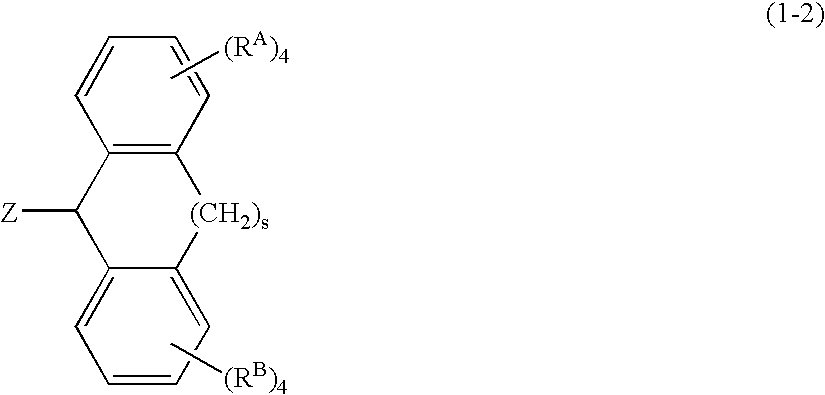Thermoplastic norbornene resin based optical film
a technology of thermal norbornene resin and optical film, which is applied in the direction of instruments, polarising elements, lighting and heating apparatus, etc., can solve the problems of film film may suffer from inferior adhesion to hard coats, and the thickness and surface smoothness of optical films can be controlled. , to achieve the effect of improving the surface smoothness of optical films
- Summary
- Abstract
- Description
- Claims
- Application Information
AI Technical Summary
Benefits of technology
Problems solved by technology
Method used
Image
Examples
synthetic example 2
[0348] With the exception of using 100 parts of 8-methyl-8-methoxycarbonyl-tetracyclo[4.4.0.1.sup.2,5.1.sup.7,10]-3-dodecene (the specified monomer B) and 150 parts of 5-(2-naphthylcarbonyloxy)bicyclo[2.2.1]hept-2-ene (the specified monomer A), reaction was conducted in a similar manner to the synthetic example 1 and yielded a resin (b-1) with a hydrogenation ratio of the olefin-based resin unsaturated bonds of 99.9%, and essentially no hydrogenation of the aromatic rings derived from the specified monomer A. The value of Tg for the resin was 105.degree. C. Measurement of the polystyrene equivalent number average molecular weight (Mn) and the weight average molecular weight (Mw) using GPC methods (solvent: tetrahydrofuran) revealed a number average molecular weight (Mn) of 33,000 and a weight average molecular weight (Mw) of 120,000, giving a molecular weight distribution (Mw / Mn) of 3.64. Furthermore, measurement of the saturated water absorption of the resin (b-1) at 23.degree. C. ...
example 2
[0367] The film (a-2) was subjected to sand mat treatment, to produce an optical film (a-4) with a light diffusing function and with a haze value of 55% and a total light transmittance value of 93%. The film was exposed to an atmosphere of 80.degree. C. and 90% relative humidity for 500 hours and the haze and the total transmittance were then re-measured, but neither value displayed any discernible change from the initial value.
[0368] The films (b-2) and (c-2) were also subjected to the same treatment to produce optical films (b-4) and (c-4) respectively with a light diffusing function and with haze values of 55% and total light transmittance values of 93%. The durability of the films (b-4) and (c-4) were evaluated in the same manner as the film (a-4), and both displayed no discernible changes from the initial values.
example 3
[0369] A transparent conductive membrane was formed on one surface of the film (a-3), using a sputtering technique with a target of indium oxide / tin oxide (weight ratio of 95:5), and yielded a transparent conductive film (a-5). The total light transmittance of this transparent conductive film was very favorable and exceeded 85%, and a visual inspection of the external appearance of the film (the presence or absence of scratches, and the degree of warping of the film) also returned favorable results. The transparent conductive film was then exposed to an atmosphere of 80.degree. C. and a relative humidity of 90% for a period of 500 hours, and the total light transmittance was re-measured and the external appearance of the film was visually inspected for evidence of changes. The results revealed that the total light transmittance remained very favorable and exceeded 85%, and the external appearance was also excellent, with no scratches, warping or swelling.
PUM
| Property | Measurement | Unit |
|---|---|---|
| Fraction | aaaaa | aaaaa |
| Nanoscale particle size | aaaaa | aaaaa |
| Nanoscale particle size | aaaaa | aaaaa |
Abstract
Description
Claims
Application Information
 Login to View More
Login to View More - R&D
- Intellectual Property
- Life Sciences
- Materials
- Tech Scout
- Unparalleled Data Quality
- Higher Quality Content
- 60% Fewer Hallucinations
Browse by: Latest US Patents, China's latest patents, Technical Efficacy Thesaurus, Application Domain, Technology Topic, Popular Technical Reports.
© 2025 PatSnap. All rights reserved.Legal|Privacy policy|Modern Slavery Act Transparency Statement|Sitemap|About US| Contact US: help@patsnap.com



